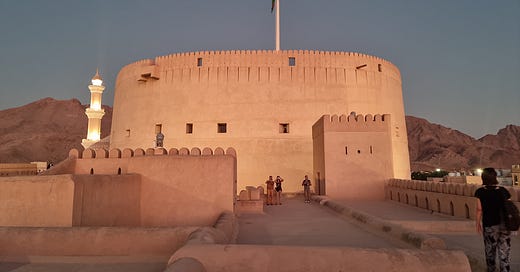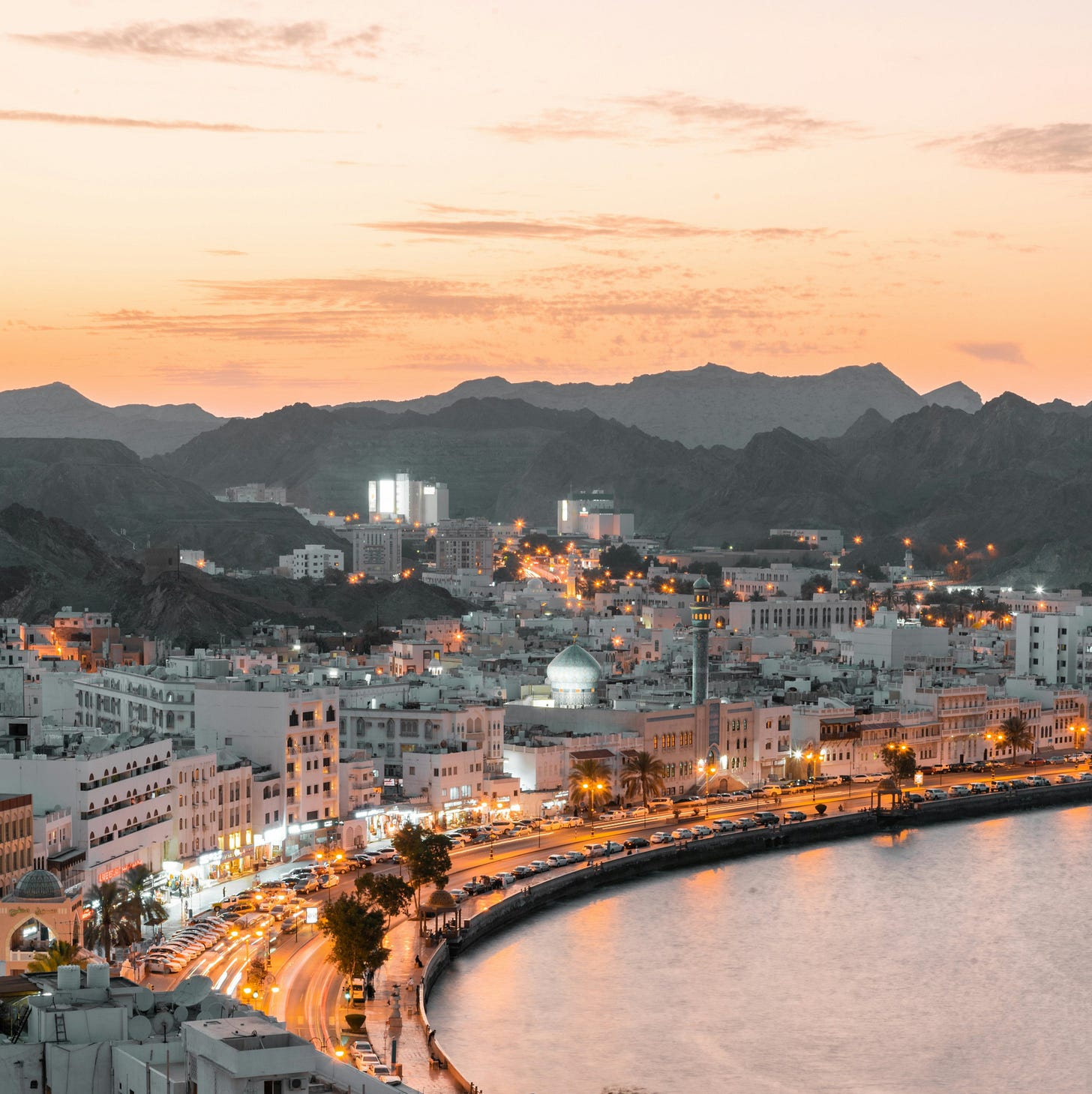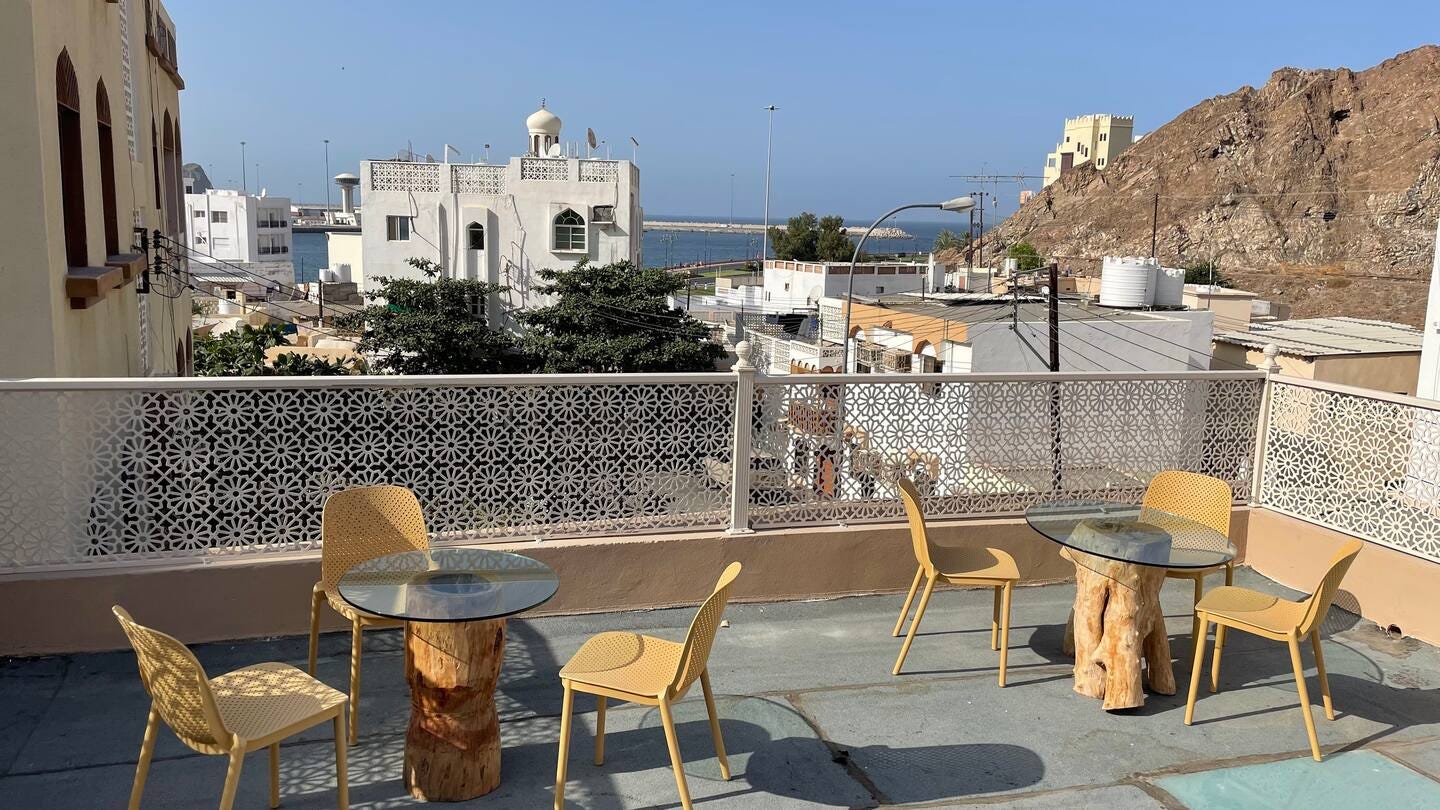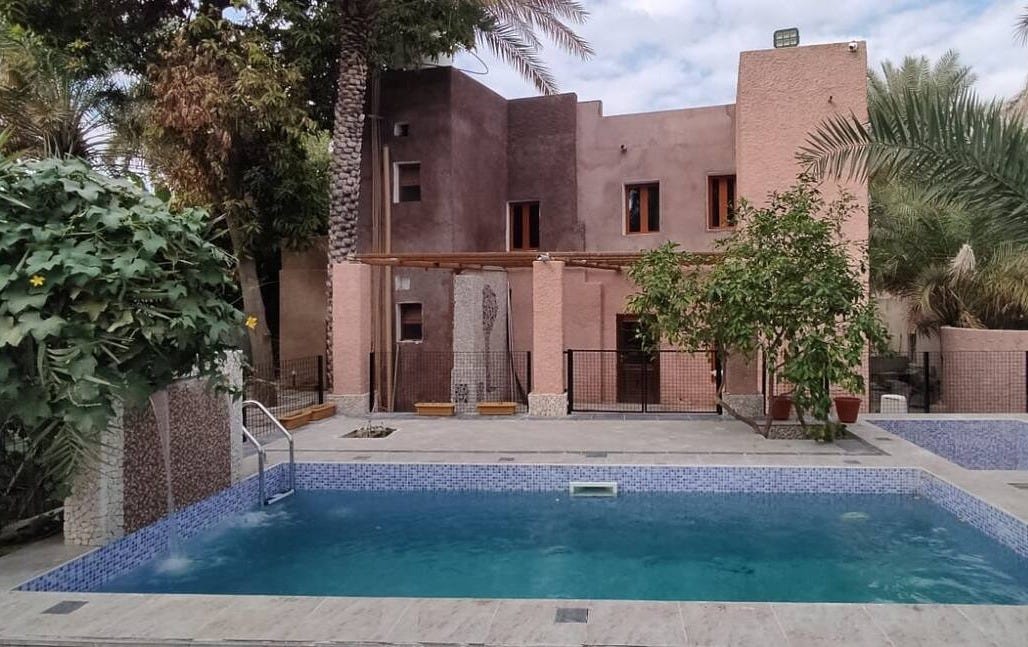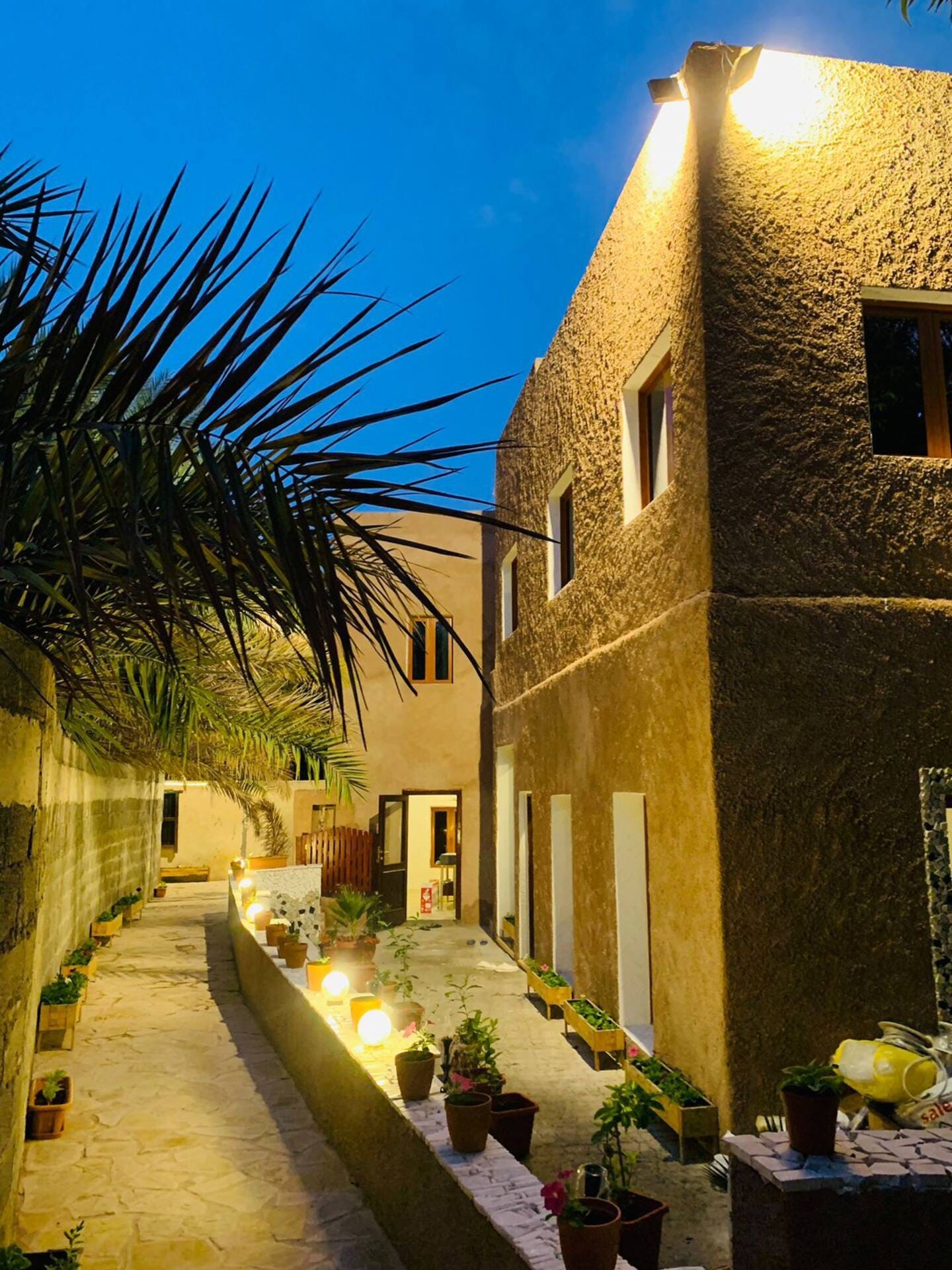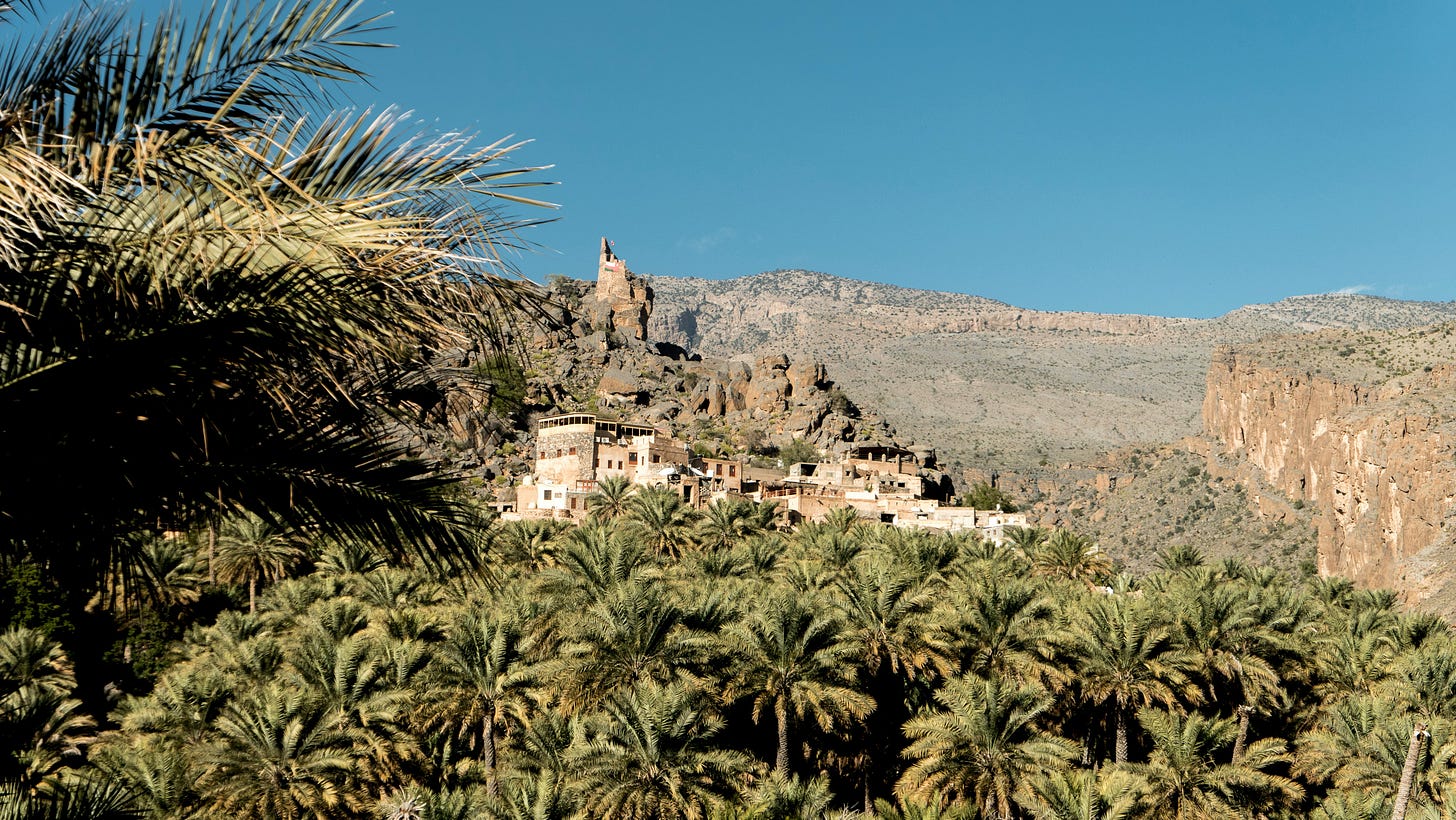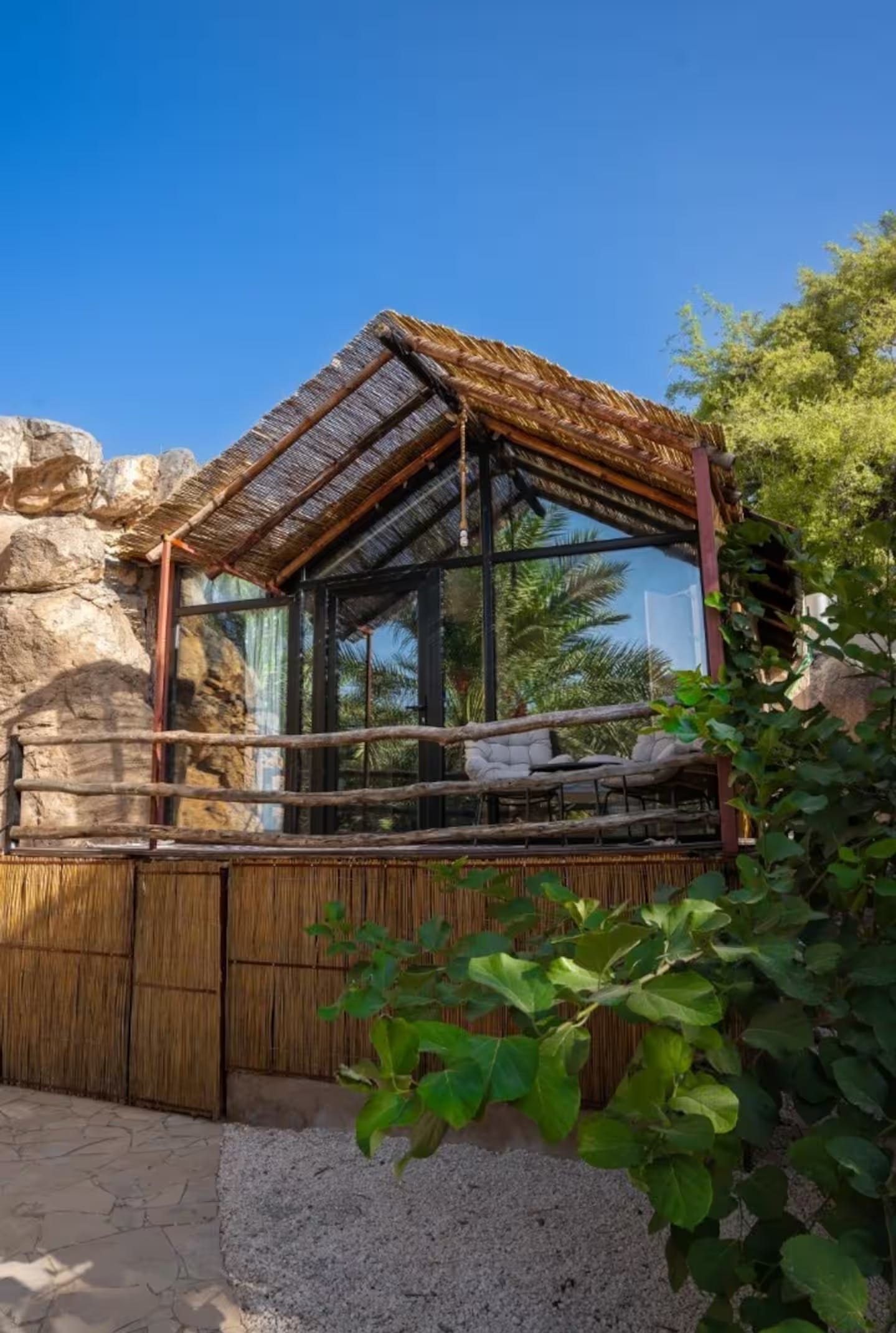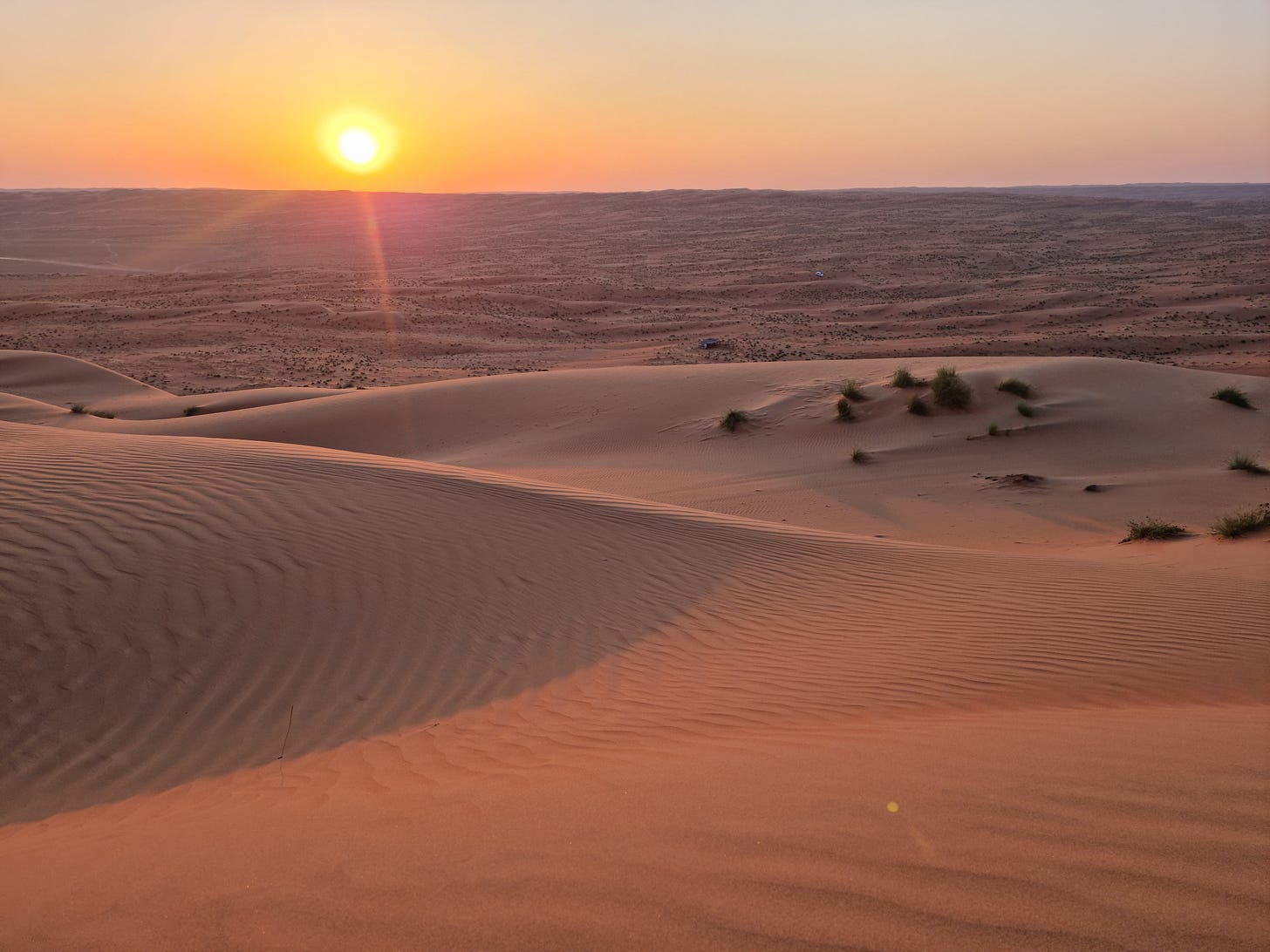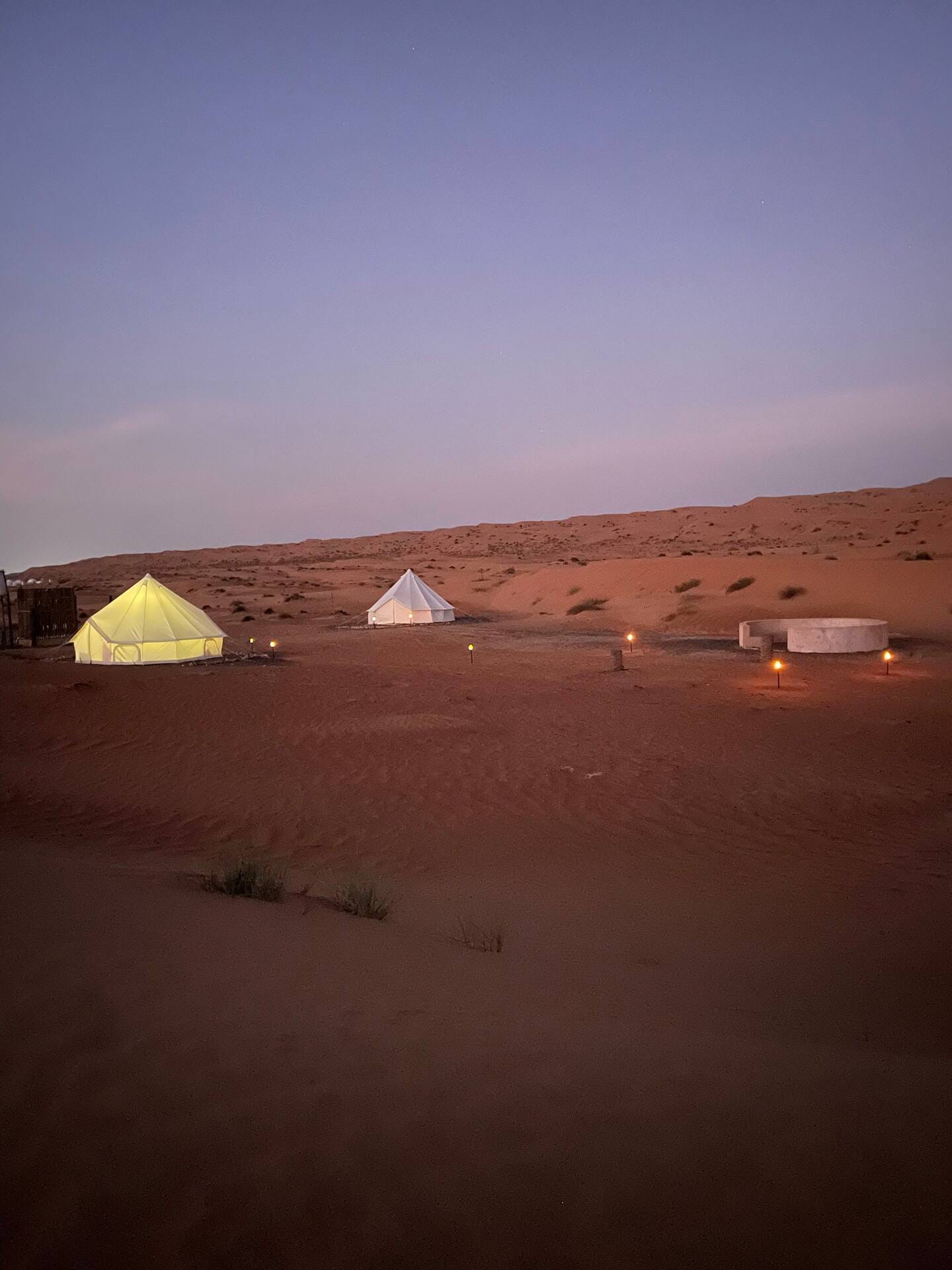Welcome back to Frolic Fest, an opportunity for me to sit back, relax, and enjoy the flight. Today, while I’m happily enduring my narrow seat in “deep economy”, my brother’s up front manning the throttles, the flaps, the rudder, and the landing gear. A man who feels most at home at high velocities and a cruising altitude of 35,000 feet, he’s one to slow down and smell the coffee once he’s back on solid ground.
The Arabian Peninsula always eluded me. Beyond the oil-fueled tech hubs of Qatar and Dubai, the historically war-torn Yemen, and the conservative, almost unreachable Saudi Arabia, my perception of the region remained relatively blank. It was my better half who changed my perspective, gradually embedding the idea that Oman - a place I had only known as a geographical name for years - might be the perfect starting point to step outside my (mostly) Euro-American comfort zone. It all felt like pure fate when I was finally whisked away.
My memory of arriving in Oman mirrors the opening words of The Shadow of the Sun, the African travel memoir by one of my favorite authors and journalists, the legendary Ryszard Kapuściński. I must have felt much like he did in 1958 when he stepped off the plane in Accra, enveloped by such bright, intense, and all-encompassing light, putting me in my place as a man of the cold north. Even in late October, just a couple minutes without sunscreen can prove painful, as the sun relentlessly beats down in 35-degree heat. Long, loose linen clothes are the thing to swear by.
The Omani people have a long history of getting along well with everybody - sometimes by choice, sometimes by force. The Portuguese and the British both had their share of influence in the region, repeatedly challenging the local Sultanate. Oman’s location at the very tip of the largest peninsula on earth, along the trade routes to India and East Asia, has shaped the openness and warmth of its people for generations. The discovery of oil reserves coincided with the start of Sultan Qaboos' 50-year reign, who, after overthrowing his father, proceeded to modernize the country and greatly improve its living standards. The Omanis are a proud people, and their approach to protecting their historic monuments and their land’s natural beauty is apparent.
Muscat (but the real, historical one) - Muttrah
Geographically, Muscat is an odd place and rather difficult to describe. Most of the city feels like a loose collection of distinct neighborhoods, stitched together during the last 20-30 years, connected by massive, multi-lane expressways. Along the coast of the Gulf of Oman, luxury hotels, modern light-colored houses, and upscale strip malls with numerous cafes and restaurants clash in what seems like controlled chaos.
For more authenticity, hop across the coastal mountains to the district of Muttrah and establish your initial base of operation in this cozy and inviting guesthouse. Like just about anywhere in Oman, expect to be welcomed with coffee infused with cardamom, saffron, and rose water, accompanied by dates. Take an evening stroll along the Corniche, try to negotiate prices at the historic Muttrah Souq (just avoid the Chinese/Indian-made plastic sandals), and end the evening with a hearty portion of Arsiya at Bait Al Luban Restaurant.
Jebel Shams and the Balcony Walk
After the sweltering heat and humidity of Muscat, an escape to the cooler climate of the Jebel Akhdar mountain range only seems natural. Luckily, an abundance of good roads and low traffic volume make Oman quite easy to get around by car. However, it’s wise to have four-wheel-drive for the mountainous sections and the desert (YouTube tutorials are the savior for its proper use). Also, be mindful of numerous speed cameras, and watch for random camels and herds of goats oblivious to traffic laws. It’s a long way up, but the Jebel Shams Canyon and the famous Balcony Walk hike along its edge are nothing short of breathtaking.
Whether you want to attack the hike after a night’s rest or squeeze it in after a long drive and then crash from exhaustion, this raw but charming accommodation will provide both an experience and a view. Don’t want to do the hike at all? No problem - frankincense-infused water and fresh dates all day on the stone terrace. Pro tip: on the way up or down, BE SURE to stop for a coffee Cliff Cafe. You may just meet a 60+ year old Swiss motorcyclist who rode across many lands and will tell you the story of their life.
Nizwa
The former capital of the Imamate of Oman, Nizwa, is a historic center of trade, art, and Islamic learning. Its location at the crossroads between Muscat, the country’s interior, and the southern Dhofar region cemented the city’s importance. Nizwa was significantly modernized under the reign of Sultan Qaboos but maintains its antique character, with many narrow, winding streets to become lost in. Walking around the 17th-century fort and the Nizwa Souq at dusk is nothing short of a magical experience. On a trip to Oman, arguably nothing else will evoke a more “being far away from home” feeling. And for those who are fans of early-90s Disney films, it’s not unlike taking a stroll through Agrabah.
Make the most of Nizwa’s charm by staying here, with access to a beautiful urban garden, pool, and, most importantly, Aflaj - part of a historic irrigation system that is endemic to Oman. If the mood changes to an educational one, skip over to the amazing, newly-opened Oman Across the Ages Museum, just 20 minutes away. Oh yeah, and be sure to visit the shabby-looking Yemeni restaurant near the Goat Souq for the best grilled chicken you will ever have in your life.
Misfat al Abriyeen
Have you ever been in a small town that just sort of feels like one big family, simply proud of where they’re from, with no intention of moving? That’s the vibe in Misfat al Abriyeen, a village of about 900 people nestled into the side of a mountain. Beneath the village, terraced fields fed by a mountain spring and a 2,000-year-old Aflaj system (how else?) are a source of dates, mangoes, pomegranates, figs, and olives. Narrow, stone-paved streets weave in between houses built of mud, stone, and sarooj (a clay-limestone mortar), some of which are over 200 years old.
The village remained isolated until a road was built to the neighboring mountaintop, causing its residents to slowly depart and move closer to civilization. As a result, the old village faced abandonment, but a local family restored the neglected homes as tourist accommodations, preserving their heritage. In 2021, the World Tourism Organization named Misfat al Abriyeen one of the Best Tourism Villages. Not to overly display my inner millennial, but how effin’ cool is that? To ensure easy access and create comforts, stay in this accommodation, which blends the traditional with the modern very tastefully. You won’t be in the old village, but you’ll be close, and boy will you get a view. Pro tip: When walking around the old village, just ask for Abdullah. He’ll give you a personal tour of his museum of family artifacts.
The Sharqiya Sands
Did you really think I’d leave out the desert? Well, think again. As cliché as it sounds, it simply must be experienced. The way the dunes shift with the setting sun, the rapid temperature changes, and the profound silence. Every so often, the distant sound of an old Toyota Land Cruiser, driven by a local Bedouin leading tourists on a bit of “dune bashing,” drifts across the sand.
Staying in simple tents, with basic amenities but traditional Omani hospitality, offers the perfect chance to reflect on this fascinating, far-from-obvious country. And please, while in the desert, for the sake of you and your travel companions, shake your shoes before putting them on.
Remember, nothing is obvious, and sometimes the biggest blanks are the ones that need to be filled in the quickest. May you be inspired to whizz off to a place you know nothing about.

